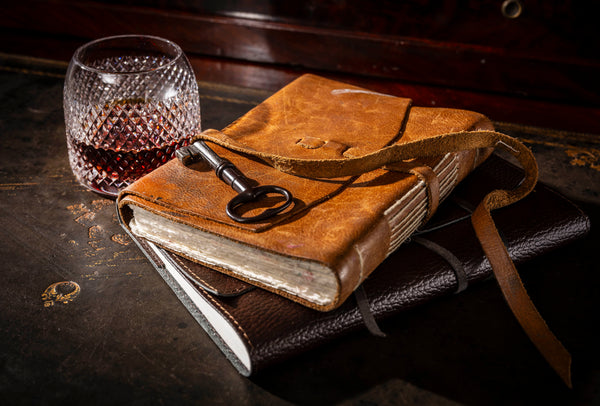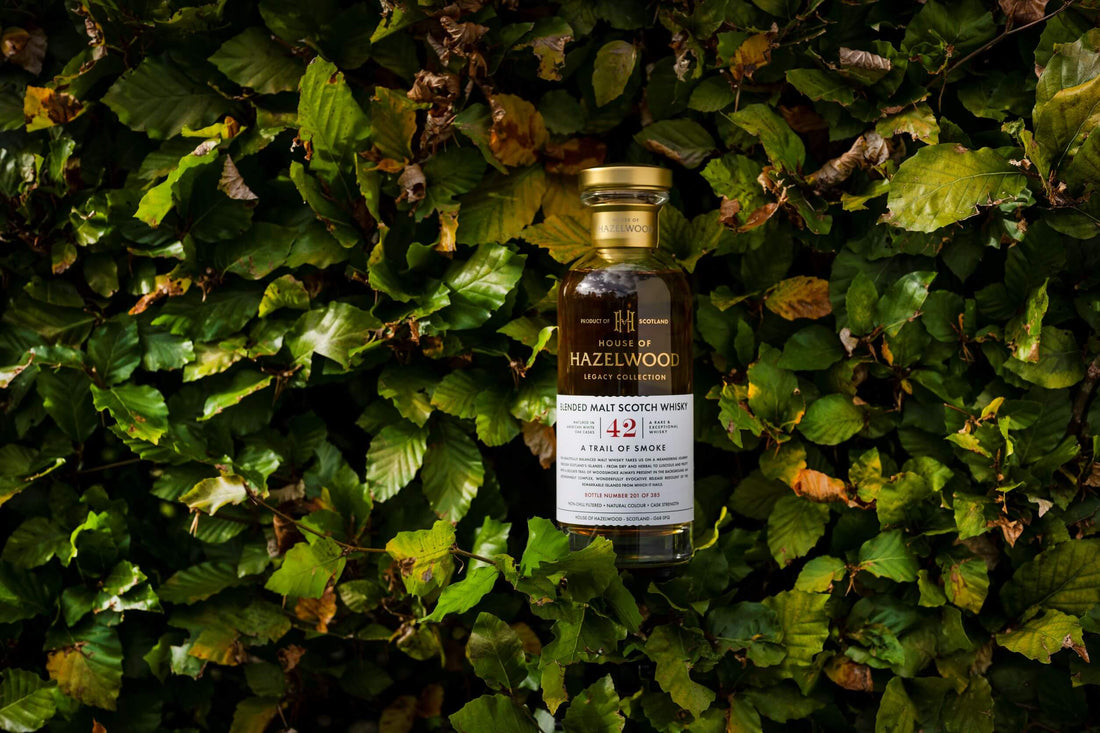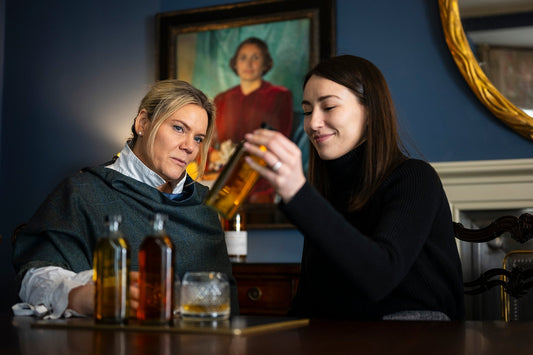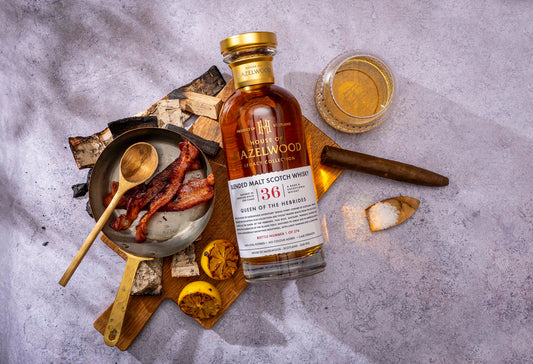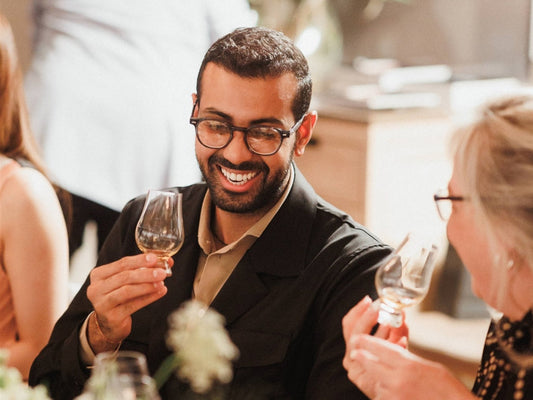Every Scotch Whisky Region is famed for its signature characteristics – but can a region be defined by a style? Journey through three exceptional examples of the Lowlands, Speyside, and Highlands/Islands.
From rugged coastal cliffs to rolling meadows, towering peaks to serene lochs, the diversity of Scotland’s rich tapestry of landscapes is reflected in the distillations produced from its famous Scotch Whisky regions.
Why do Scotch Whisky Regions Make a Difference?
From the emergence of the first sprouts of barley to the first pour of rich amber spirit, a Scotch Whisky is eternally bonded to the cultural and geographical influence of its origin region.
As the cereals are grown, nourished by the region’s native soil and subject to its weather, the influence of the landscape begins. Each passing day making its mark on the component barley or grain.
The peats burned in the kilning process only serve to strengthen nature’s hold on these treasured spirits. Millennia of history, the landscape’s very own record, are unlocked and imparted on the component barley as phenols.
Throughout this process, our own human impact works alongside that of Mother Nature.
The cultures, local techniques, and generational expertise of the region, often passed on through word-of-mouth, shapes the spirit’s conception and eventual character.
Exploring the different Scotch Whisky regions therefore invites us to investigate the link between people and place – helping to build an understanding of the signature characteristics different regions present and the style of whisky produced.

The Overlooked Scotch Whisky Region: The Lowlands
Stretching across the Southern border of Scotland, The Lowlands offer a different take on the development of Scotch Whisky.
More populous than the remote communities found further North, The Lowlands’ closer proximity to the border and more established transport links saw it emerge as an early home of Scotch.
Notable for its calmer landscapes of rolling hillsides and meandering rivers, the Lowlands offer a considerably different backdrop to the more dramatic scenery commonly associated with Scotland.
The whiskies distilled across the Lowlands reflect this serenity in their character – with unpeated, smoother distillations becoming characteristic of the region.
Our own Lowland whisky, The Lowlander, is the epitome of these more graceful, lighter-bodied Scotches.
This 36-year-old Blended Scotch marries component spirits from a number of Lowland distilleries to reveal and celebrate their distinctive character – resulting in a whisky that is both crisp and complex.
From the first impression on the nose, we find ourselves transported to the lush Lowland countryside, with notes of meadow grass and subtle hints of fruit.
On the palate, we are greeted by a springtime sweetness of spun sugar and star fruit – before we are invited to relax into the experience with a meandering, mouth-watering finish.
“The Lowlander is certainly an ambassador for the region’s distillation and maturation.”
The Luxury Editor
Considered in the context of the various Scotch Whisky regions and their associated styles, The Lowlander’s significance becomes all the more apparent.
Over the centuries that followed whisky’s initial conception in the 15th Century, far more distilleries opened further North, across Speyside, the Highlands, and Islands – overshadowing the output from the Lowland region and relegating this traditionally lighter, more delicate whisky to a perceived secondary status.
However, with The Lowlander, we are reminded of the strengths of Lowland whisky and are offered a chance to question these misconceptions.
What it lacks in rich peatiness and punchy richness, it more than makes up for in its wonderful balance, interwoven layers of flavour, and graceful expression.
The Lowlander, and Lowland whisky in general, can thus be characterised not only by its lighter profile but also by its ‘underdog’ status – providing an entry point into a parallel world of Scotch Whisky where the blender’s skill lies in restraint, the flavours more finely balanced, and the meandering experience altogether gentler. In short, expressions from the Lowlands offer an almost perfect mirror image of the region from which they derive.

The Most Densely Populated Scotch Whisky Region: Speyside
Set in north-eastern Scotland with the Highlands to the west and Aberdeenshire in the east, Speyside sits at the other of the end the spectrum to the Lowlands, with more distilleries today than any other Scotch Whisky region.
Marked by fertile valleys, Speyside offers the ideal landscape and climate to grow barley, and, with the River Spey at the heart of the region, the perfect source of water.
Famed its purity and softness, the water that runs through the River Spey is naturally filtered through granite and sandstone – providing the finest fresh water for use in the distillation process.
This combination of factors is perhaps what has led to the establishment of over 50 distilleries in the area, and with it, various styles of Scotch.
The Tops, our 33-year-old Speyside Blended Malt Scotch, provides a fine example of the high-quality output this region has become so famous for.
Like a large proportion of Speyside Scotches, The Tops has lain in ex-sherry casks during its extensive maturation – marrying together the finest spirits in our inventory to form a wonderfully indulgent blend.
Notes of rich toffee, treacle, and caramel greet us on the nose. While the palate provides an initial sweetness and drying oak character, before ending with a sweet sherbet finish.
Heavily sherried, yet still smooth and silky, the contrast between bright notes and velvety textures has become synonymous with the region and is no better expressed than with this Blended Malt.
A reminder of the region’s reputable status as well as the magical experiences whisky can provide.

The Wildcard: Highlands and Islands
As we journey across to the Coast of Scotland, we find a range of whiskies from across the dramatic landscapes of the Highlands and Islands.
Most notable for their smokier flavour, maritime influence, and intensity, Island whiskies offer their own appeal – with significant diversity occurring from island to island.
These islands, home to a number of isolated distilleries, use the abundant source of peat native to each of them when drying the mash during kilning – and therefore often carry their own signature smoke flavour.
A Trail of Smoke, our 42-year-old Blended Malt Scotch Whisky, takes us across these Islands by offering an accessible, yet exceptionally complex blend.
A signature saltiness, common to the majority of Island whisky, is first noticeable on the nose. It then develops into a dry, herbal aspect which unfolds above the signature backbone of woodsmoke.
On the palate, each of the Island’s characters come to the fore with luscious notes of tropical fruits and herbaceous grass, first dry and then sweet, swelling above a smoky foundation.
The appeal of this whisky lies in the journey it takes, as flavours combine, overlap, and contrast – leading across these Islands and forcing us to take in the breath-taking views.
“It tastes like a meandering tour of the Scottish Islands... Perhaps the standout of the Autumn releases.”
Simon Thomson, City AM
Scotch Whisky Regions: More of a Starting Point Than a Style
The signature smokiness, sea-salt, and intensity of an Island whisky, the delicate profile of a Lowland, or the smoothness of a Speyside may lead us to attribute certain styles to particular Scotch Whisky regions.
Yet, these characteristics should rather be considered as common themes, attributes, or clues, as opposed to classifications.
Whisky’s inherent appeal lies in the complex expressions and experiences that can be created, as if by magic, through the simple processes of distillation and maturation.
With so much variation within each region, the best way to truly understand what each region can offer is to visit for yourself. Or simply purchase a bottle and allow our whiskies to take you there instead.
